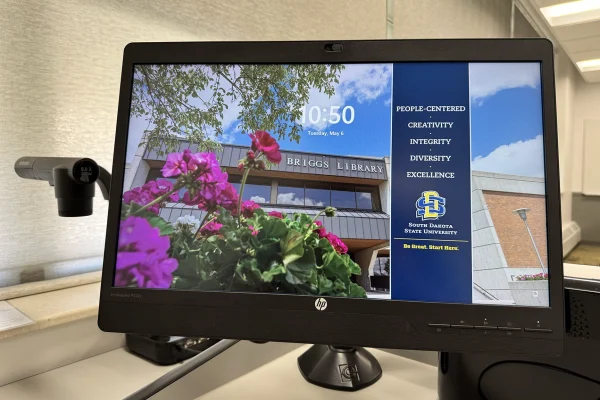Winter may hit record highs in ’09
November 3, 2009
Emma Dejong
After what was South Dakota’s seventh coldest summer on record, the news that this winter will be warmer than average may come as a shock.
“The most likely outcome for this winter is that the average (temperature) will be above the 30-year average,” Extension State Climatologist Dennis Todey said.
For Brookings, this means the average temperature will be above 15 degrees Fahrenheit.
The cause of this is El Niño, which is a warming of the sea surface temperatures.
According to the National Oceanic and Atmospheric Administration (NOAA), “El Niño is characterized by unusually warm ocean temperatures in the Equatorial Pacific ? El Niño is an oscillation of the ocean-atmosphere system in the tropical Pacific having important consequences for weather around the globe.”
This past summer (June, July and August) Brookings had an average temperature of 65.1 degrees Fahrenheit, which was over 3 degrees cooler than the 30-year average, 68.5 F. This was due to a high-pressure ridge over the west coast and a tropic low pressure through the central and eastern United States.
“Basically, we had a fairly slow-moving and persistent pattern that stayed around for most of the summer,” said Mike Gillispie, the hydrologist for the National Weather Service in Sioux Falls. “We never really had a huge warm-up anywhere.”
While this summer was out of the ordinary, it has nothing to do with this winter being warmer.
“There’s really no statistically significant correlation between a cold summer and what happens in the next winter,” Gillispie said.
However, cooler temperatures in the summer can have an effect on the amount of precipitation the following winter, according to Scott Curl, a forecast meteorologist for the NOAA National Weather Service.
Curl found in his research that “winter seasons after significantly cool summers tended to be wetter than normal, with 45 percent of the following winters having this characteristic.”
This year, heavy precipitation is not predicted to arrive until late winter or early spring.
“The period where we would expect some higher than average precipitation would be in the Feb./March time period,” Todey said.
In contrast with NOAA’s, Todey’s and Gillispie’s predictions, The Farmers’ Almanac forecasted a very cold and snowy winter, saying it will be “frigid especially in the middle of the country.”
Todey said people cannot always take what they read as fact, even though they may find it interesting.
“From a researcher’s standpoint, they don’t have a whole lot of credibility,” Todey said. “It’s a nice thing for people to read, but they tend to paint things in very broad terms.”
Todey thinks it is important to remember a warm winter does not mean we will not see those freezing temperatures Midwesterners are so familiar with.
“It’s going to be a winter in South Dakota, so we are going to get cold at times,” Todey said. “We will have some warm periods, we will have some cold periods.”
For Lucy Swedlund, a freshman Spanish major, any warm weather this winter will be appreciated.
“It’s been a rainy, cold summer, so it’s surprising,” said Swedlund. “Everyone has told me horror stories here, so that’s good news to me.”





















